Gaussian Mixture Regression
Project description

Gaussian Mixture Models (GMMs) for clustering and regression in Python.
Source code repository: https://github.com/AlexanderFabisch/gmr
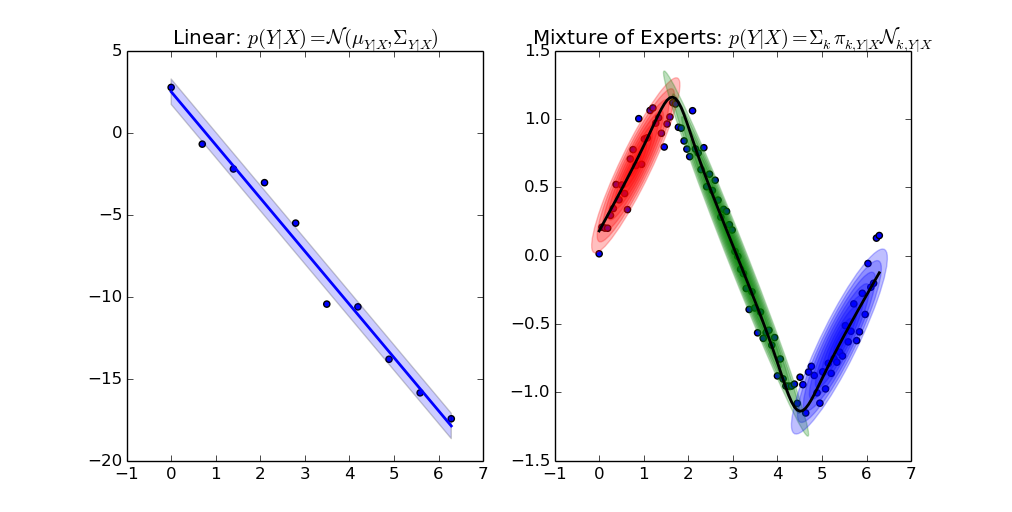
Example
Estimate GMM from samples and sample from GMM:
from gmr import GMM
gmm = GMM(n_components=3, random_state=random_state)
gmm.from_samples(X)
X_sampled = gmm.sample(100)For more details, see:
help(gmr)Installation
Install from PyPI:
sudo pip install gmror from source:
sudo python setup.py installHow Does It Compare to scikit-learn?
There is an implementation of Gaussian Mixture Models for clustering in scikit-learn as well. Regression could not be easily integrated in the interface of sklearn. That is the reason why I put the code in a separate repository. It is possible to initialize GMR from sklearn though:
from sklearn.mixture import GaussianMixture
from gmr import GMM
gmm_sklearn = GaussianMixture(n_components=3, covariance_type="diag")
gmm_sklearn.fit(X)
gmm = GMM(
n_components=3, priors=gmm_sklearn.weights_, means=gmm_sklearn.means_,
covariances=np.array([np.diag(c) for c in gmm_sklearn.covariances_]))Gallery
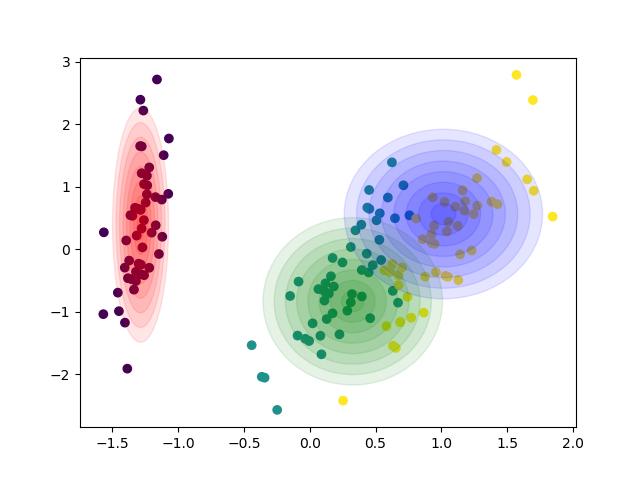
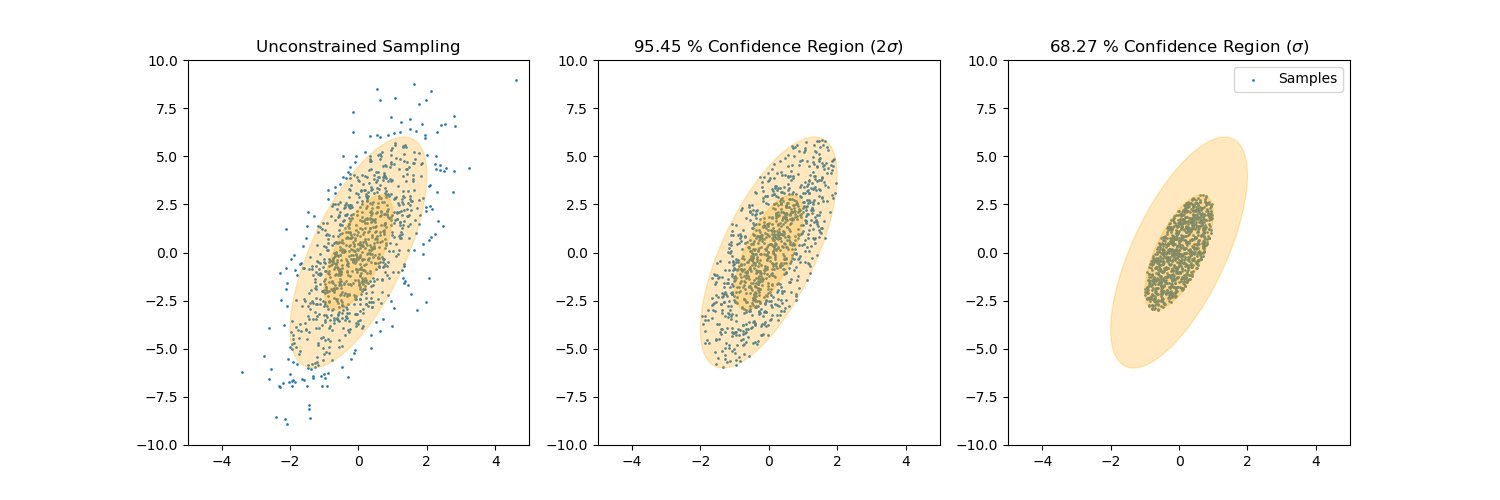
Sample from confidence interval
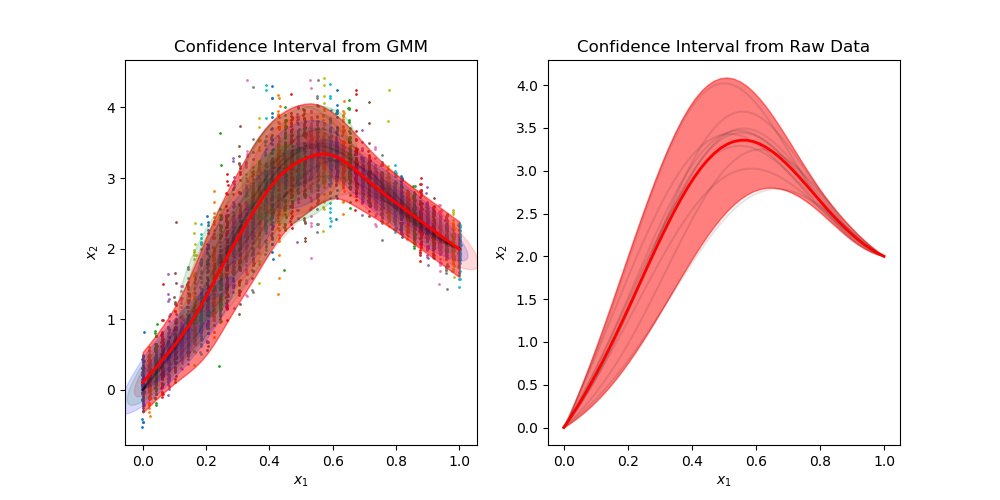
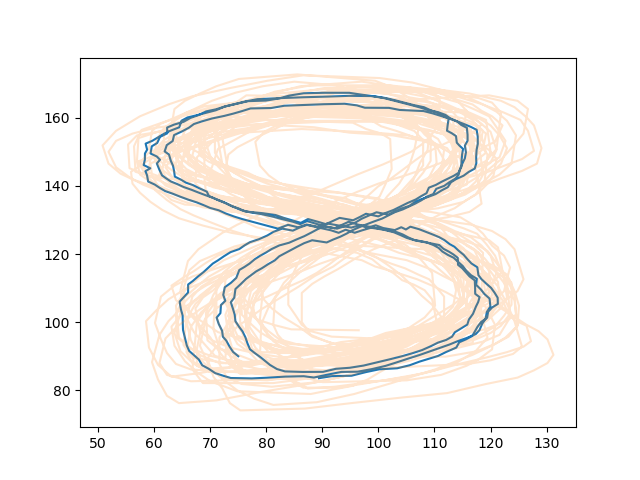
Sample time-invariant trajectories
You can find all examples here.
Saving a Model
This library does not directly offer a function to store fitted models. Since the implementation is pure Python, it is possible, however, to use standard Python tools to store Python objects. For example, you can use pickle to temporarily store a GMM:
import numpy as np
import pickle
import gmr
gmm = gmr.GMM(n_components=2)
gmm.from_samples(X=np.random.randn(1000, 3))
# Save object gmm to file 'file'
pickle.dump(gmm, open("file", "wb"))
# Load object from file 'file'
gmm2 = pickle.load(open("file", "rb"))It might be required to store models more permanently than in a pickle file, which might break with a change of the library or with the Python version. In this case you can choose a storage format that you like and store the attributes gmm.priors, gmm.means, and gmm.covariances. These can be used in the constructor of the GMM class to recreate the object and they can also be used in other libraries that provide a GMM implementation. The MVN class only needs the attributes mean and covariance to define the model.
Publications
The first publication that presents the GMR algorithm is
[1] Z. Ghahramani, M. I. Jordan, “Supervised learning from incomplete data via an EM approach,” Advances in Neural Information Processing Systems 6, 1994, pp. 120-127, http://papers.nips.cc/paper/767-supervised-learning-from-incomplete-data-via-an-em-approach
but it does not use the term Gaussian Mixture Regression, which to my knowledge occurs first in
[2] S. Calinon, F. Guenter and A. Billard, “On Learning, Representing, and Generalizing a Task in a Humanoid Robot,” in IEEE Transactions on Systems, Man, and Cybernetics, Part B (Cybernetics), vol. 37, no. 2, 2007, pp. 286-298, doi: 10.1109/TSMCB.2006.886952.
A recent survey on various regression models including GMR is the following:
[3] F. Stulp, O. Sigaud, “Many regression algorithms, one unified model: A review,” in Neural Networks, vol. 69, 2015, pp. 60-79, doi: 10.1016/j.neunet.2015.05.005.
Sylvain Calinon has a good introduction in his slides on nonlinear regression for his machine learning course.
Project details
Download files
Download the file for your platform. If you're not sure which to choose, learn more about installing packages.













